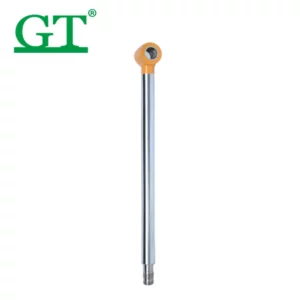The future of hydraulic technology is likely to be shaped by several trends and developments aimed at enhancing efficiency, sustainability, and performance. Some potential future trends in hydraulic technology include:
- Electrification: The integration of electric components into hydraulic systems, such as electric pumps and actuators, is expected to increase. This trend aims to improve energy efficiency, reduce emissions, and enable better integration with electrified vehicle platforms.
- Smart Hydraulic Systems: Advances in sensors, actuators, and control systems will enable the development of smart hydraulic systems capable of real-time monitoring, predictive maintenance, and adaptive control. These systems will optimize performance, reduce downtime, and enhance safety.
- Hydraulic Hybrid Systems: Hydraulic hybrid systems, which combine hydraulic and electric power sources, are gaining attention for their potential to improve energy efficiency in vehicles and machinery. These systems can capture and store energy during braking or deceleration and reuse it for acceleration, reducing fuel consumption and emissions.
- Alternative Fluids: Research into alternative hydraulic fluids, such as biodegradable oils and water-based fluids, is ongoing to address environmental concerns and regulatory requirements. These fluids offer improved sustainability, reduced environmental impact, and compatibility with emerging hydraulic technologies.
- High-Pressure Hydraulics: The adoption of higher operating pressures in hydraulic systems will continue to increase, driven by the demand for compact, lightweight components with higher power density. Advanced materials and manufacturing techniques will enable the development of components capable of withstanding higher pressures while maintaining reliability and safety.
- Modular and Scalable Systems: Hydraulic systems designed with modular and scalable architectures will enable flexibility and customization to meet the diverse needs of different applications. This approach will facilitate easier integration, maintenance,China Hydraulic Parts manufacturers and upgrades, reducing total cost of ownership and enhancing system performance.
- Energy Recovery Systems: Hydraulic systems equipped with energy recovery systems, such as hydraulic regenerative braking, will become more prevalent in various applications. These systems capture and store energy during deceleration or load lowering and reuse it to assist in acceleration or lifting, improving energy efficiency and reducing operating costs.
- Additive Manufacturing (3D Printing): Additive manufacturing techniques, such as 3D printing, will enable the production of complex hydraulic components with optimized designs and reduced lead times. This technology will facilitate rapid prototyping, customization, and cost-effective production of hydraulic parts with improved performance and reliability.
- Digitalization and Connectivity: The integration of digital technologies, including IoT (Internet of Things), AI (Artificial Intelligence), and cloud computing, will enable connectivity and data-driven optimization of hydraulic systems. Real-time monitoring, remote diagnostics, and predictive analytics will enhance performance, reliability, and efficiency while enabling proactive maintenance and troubleshooting.
- Bio-Inspired Design: Bio-inspired design principles, drawing inspiration from natural systems and phenomena, will influence the development of innovative hydraulic components and systems. These designs will optimize efficiency, reduce energy losses, and improve adaptability and resilience, leading to more sustainable and robust hydraulic solutions.
Overall, the future of hydraulic technology is characterized by advancements in electrification, smart systems, alternative fluids, high-pressure capabilities, modular architectures, energy recovery, additive manufacturing, digitalization, and bio-inspired design. These trends aim to address current challenges, improve performance, and drive innovation in hydraulic systems for various industrial, mobile, and stationary applications.
